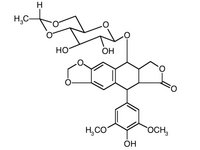Business Editors/Health/Medical Writers
JENKINTOWN, Pa.--(BUSINESS WIRE)--March 8, 2004
The National Comprehensive Cancer Network (NCCN), an alliance of nineteen of the world's leading cancer centers, announces a major update of the NCCN Non-Small Cell Lung Cancer Clinical Practice Guidelines. In a significant addition to be presented on March 11 at the NCCN 9th Annual Conference: Clinical Practice Guidelines & Outcomes Data in Oncology(TM), the recently approved targeted therapy, gefitinib (Iressa(R), AstraZeneca Pharmaceuticals LP) is now recommended as third-line therapy and as second-line only if the platinum/docetaxel combination was used as first-line therapy.
The NCCN's Non-Small Cell Lung Cancer guidelines panel has added more detail to its recommendations for administration of chemotherapy to patients with this disease including patient selection criteria and definition of first-, second-, and third-line agents and combinations. Chemotherapeutic agents are specified as two-agent regimens for first-line therapy, two agent regimens or single agents for second-line therapy, and one single agent for third-line therapy. Agents used in first- and second-line therapy are: cisplatin (Platinol(R), Bristol-Myers Squibb Company), carboplatin (Paraplatin(R), Bristol-Myers Squibb Company), paclitaxel (Taxol(R), Bristol-Myers Squibb Company), docetaxel (Taxotere(R), Aventis Pharmaceuticals Inc.), vinorelbine (Navelbine(R), GlaxoSmithKline), gemcitabine (Gemzar(R), Eli Lilly and Company), etoposide (Toposar(TM), Pfizer, Inc.; VePesid(R), Bristol-Myers Squibb Company; Etopophos(R), Bristol-Myers Squibb Company), irinotecan (Camptosar(R), Pfizer, Inc.), vinblastine (Velban(R), Eli Lilly and Company), mitomycin (Mutamycin(R), Bristol-Myers Squibb Company), and ifosfamide (Ifex(R), Bristol-Myers Squibb Company).
"NCCN Clinical Practice Guidelines in Oncology are widely recognized as the standard for clinical policy in oncology. Additionally, managed care companies are using them increasingly to help establish coverage policy," said William T. McGivney, PhD, Chief Executive Officer of NCCN. "As such, the NCCN recognizes its responsibility to provide up-to-date information to inform decision-making. Thus, the NCCN Guidelines process is an ongoing, continual process."
NCCN Clinical Practice Guidelines in Oncology are available free of charge on CD-ROM. These can be ordered from NCCN by calling 215-690-0300. The guidelines can also be found at www.nccn.org.
The National Comprehensive Cancer Network (NCCN), an alliance of 19 of the world's leading cancer centers, is an authoritative source of information to help patients and health professionals make informed decisions about cancer care. Through the collective expertise of its member institutions, the NCCN develops, updates, and disseminates a complete library of clinical practice guidelines. These guidelines are the standard for clinical policy in oncology. NCCN's complete spectrum of programs emphasizes improving the quality, effectiveness, and efficiency of oncology practice.
COPYRIGHT 2004 Business Wire
COPYRIGHT 2004 Gale Group



